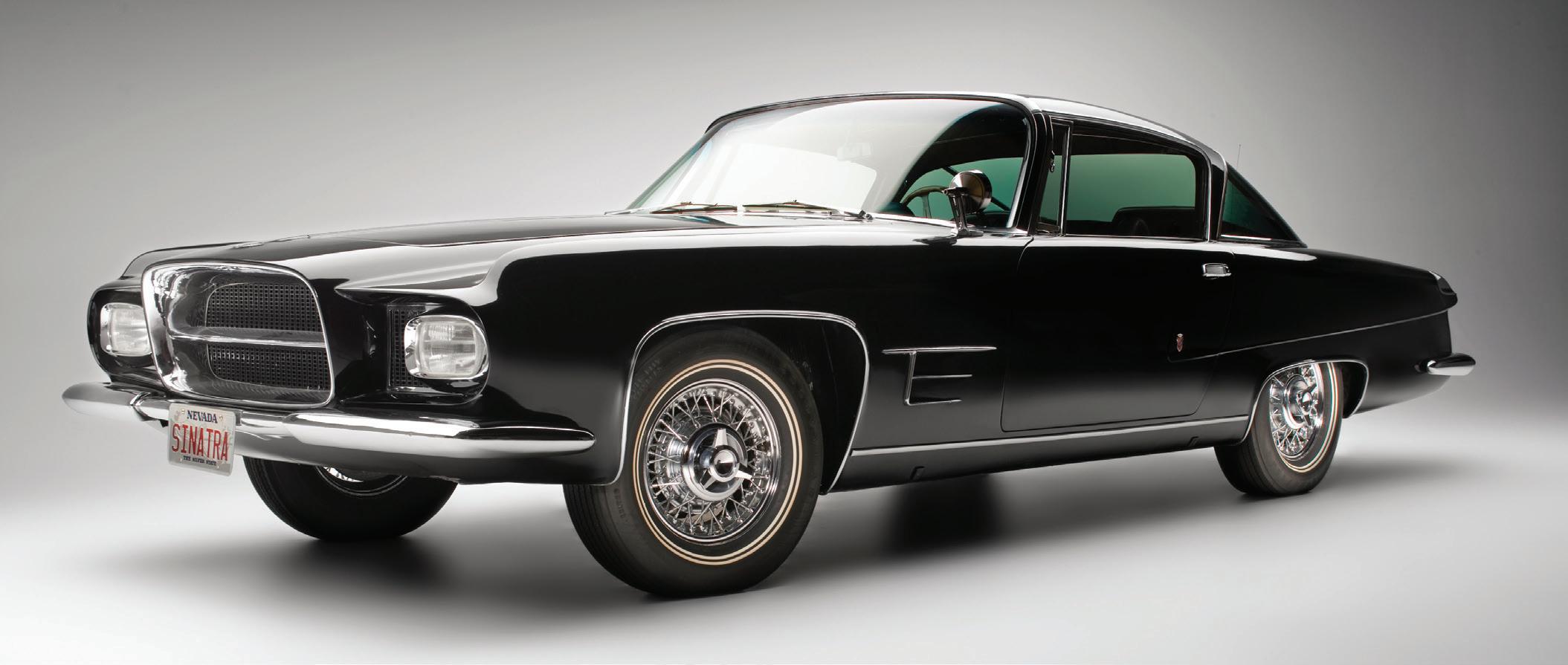in his first Maxwell. Today it sits near the entrance of Gallery Two. It is bright red, even though Maxwell only produced the 1911 AB Runabout in dark blue with ivory wheels. The running boards are covered in rubber instead of linoleum. The seats are upholstered in vinyl, not the original leather. The U-joints are wrong. So is the carburetor, the magneto, the oiling system, the fenders, and the interior of the cowl. You might notice that the radiator and shape of the hood on the 1911 Maxwell ad and photos (shown) feature a narrower radiator with a symmetrically round top tank. There are supposed to be 10 louvers. Someone seems to have installed 1907 parts with a more irregular shape of the hood, only nine louvers and a wider radiator.
In other words, everything that is wrong about that first Maxwell represents a lesson to “do it right” learned by Mr. Harrah and put into practice with the other Harrah cars that are in our museum today.
This is the original blue color that is correct for all 1911 Maxwells.This one is owned by Museum volunteer Al Abrahamson and features the correct headlamps, linoleum running boards and the proper 1911 radiator and hood.
1 9 1 1 MAX W E LL A B RU NABOUT BUILT BY
Maxwell-Briscoe Motor Co. Tarrytown, New York
PRICE WHEN NEW ENGINE
$600
BORE STROKE DISPLACEMENT
4 1/2”
Horizontal Opposed 2-Cylinder, 16 hp 4” 127.2 Cu. In.
However, he never quite lost that one quirk of “hopping up” a few of his personal rides. In Gallery Four you can see the Ferrari V-12 engine he stuffed into a sedate, but stretched, 1977 Jeep Wagoneer. In Gallery Three you’ll spot his 1956 Lincoln Continental that received a transplant of a 1958 Chrysler Hemi engine (it wasn’t exactly a stock motor as specialist Ed Pink bored the 392 cu.in. to 440 cubic inches, installed dual-quad carburetors and a few other upgrades to produce 400 horsepower). If you look close, you might also detect a Model A or two here in Reno with some minor personal Harrah “improvements.” With those few exceptions, thank you William Fisk Harrah for learning those painful and embarrassing Maxwell lessons so well that you inspired generations of classic car restorers to seek perfection…and for making our Museum so special.
IN M E M ORY
B OB CIN K E L 1/24/1940 - 8/8/2019
If you’ve been inside the Museum, read past issues of Precious Metal magazine, or even received an invitation from the Museum you’ve been introduced to Robert Glen “Bob” Cinkel and his artwork. Or you may be lucky enough to have one of his paintings hanging in your home. Over the last six decades Bob created hundreds of paintings and other works of art. Bob began his career as an advertising artist, after 45 years he “retired”. Museum Chairman Ranson Webster, who Bob had worked for before retirement, generously paid him to work part-time at the Museum. As the Museum’s graphic artist, Bob spent 1 0 N AT I O N A L A U T O M O B I L E M U S E U M F E B R U A R Y 2 0 2 0
his time designing signage, interpretive text to accompany the Museum’s exhibits, and filling the Museums walls with his paintings. Bob was a self-described historian, he loved old snapshots and spent his “free” time combing antique stores across the West for vintage black and white photographs.Those photos became the inspiration for many of his wonderful paintings, along with several books. Those of us that worked with Bob at the Museum miss him dearly.We are grateful that he shared his remarkable talent and skill with the Museum, and its visitors. He helped us reach important goals, including transforming our newsletter into a magazine. Bob will forever be a part of the National Automobile Museum and in our hearts.













